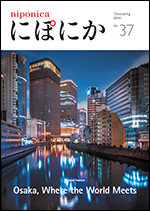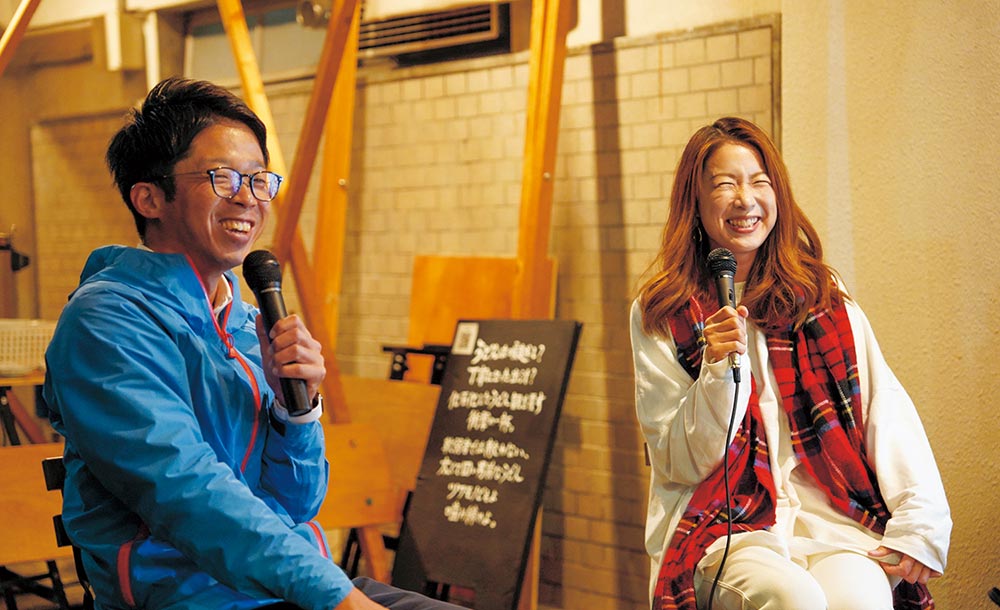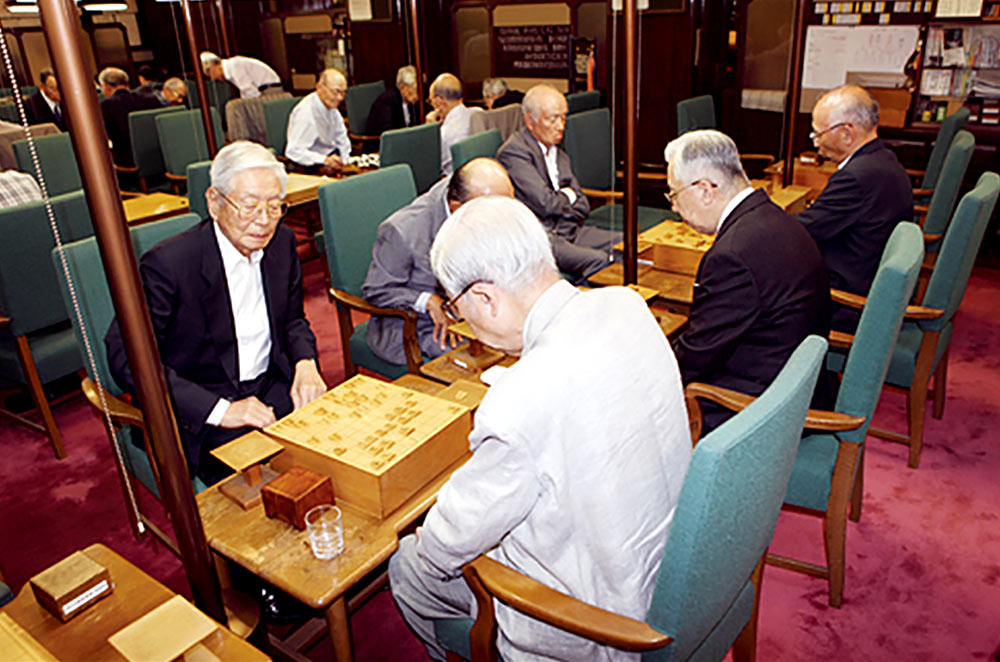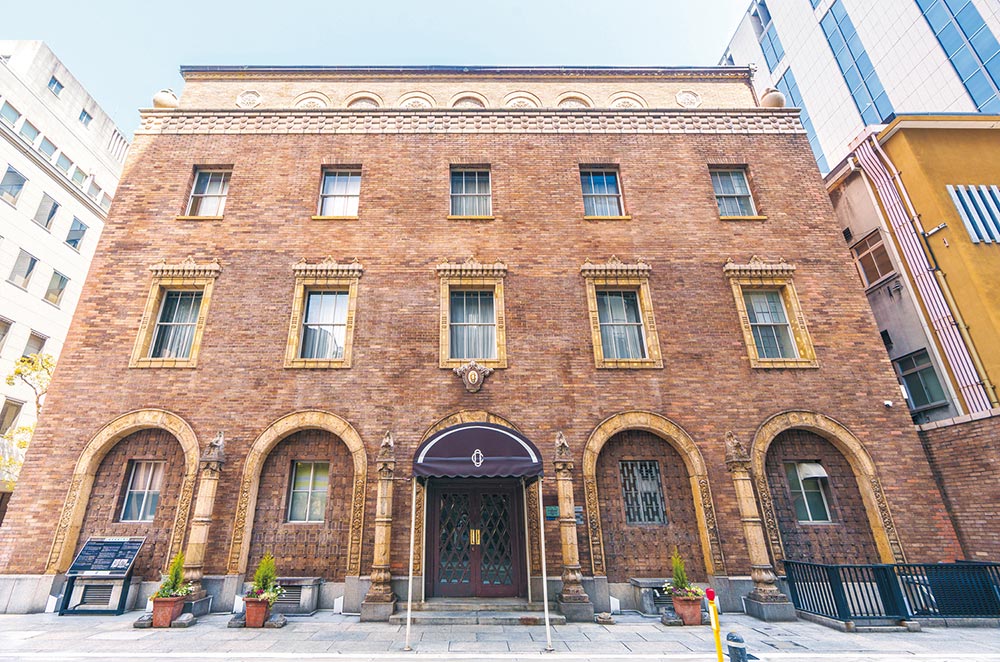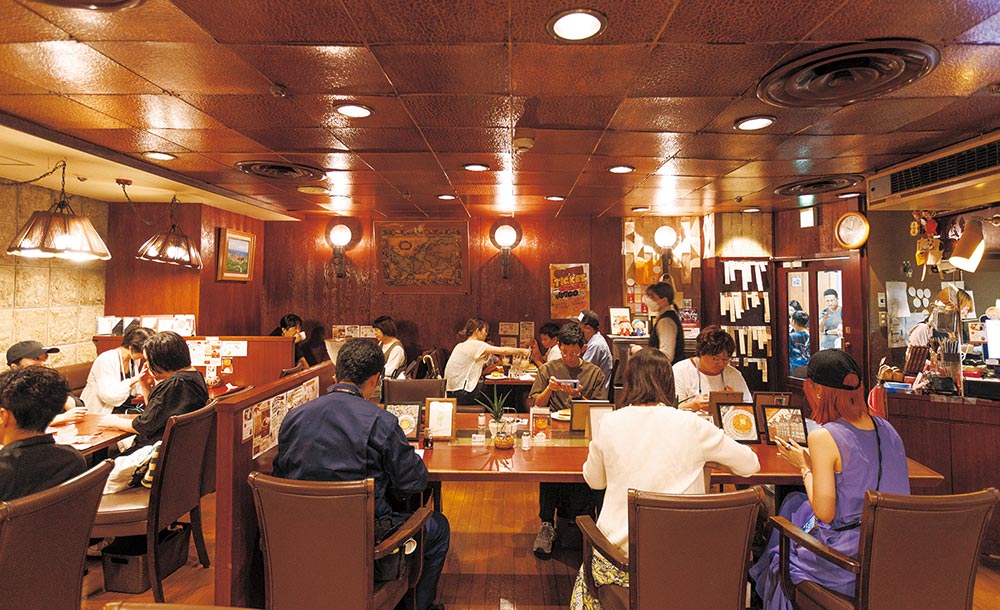
2025 NO.37
MenuOsaka, Where the World Meets

The Birthplaces of Osaka-Style Communication
As a city that thrives on exchange and interaction, Osaka has many special places where people like to gather to laugh, talk, and enjoy hobbies.
Photos: Kurihara Osamu, PIXTA
A discussion venue that makes participating easy
Held in and around Nakatsu, an area north of Umeda in the heart of Osaka that still retains a downtown atmosphere, Hyper Engawa is a talk event that has been conducted more than 300 times since 2019. The term engawa refers to a terrace-like space in traditional Japanese houses. Its function is to connect the outside with the inside. The event was named after this space to express the idea that people from outside should feel free to stop by. Topics range from local economic issues to music. Visitors are free to drop by whenever they want and interact with other participants. It is a special place that brings people together.
Watching warai, a type of comedic performance that has become a traditional form of entertainment
The Osaka dialect goes hand in hand with comedy and humor. This is because the roots of Osaka’s signature warai, the art of comedy, can be traced back to rakugo, a form of comic storytelling that is believed to have originated around the 17th century. Rakugo is a storytelling art in which a comic performer narrates a funny story while playing several roles at once, using only body language to distinguish between them. At Tenma Tenjin Hanjotei, kamigata rakugo, a form of comic storytelling that employs the light and witty Osaka dialect, is performed every day. Its auditorium is always packed with people eager to enjoy the art of storytelling in the home of warai.
Playing board games at a club with traditions
In the past, the downtown area of Osaka was home to many kaisho (clubs, lit. “meeting places”) where fans of traditional board games such as go and shogi would gather. With the success of the legendary shogi master Sakata Sankichi (1870-1946), who gave himself the title of Kansai Meijin (“Kansai" being the southern-central region of main island Honshu and “Meijin" being the most prestigious title in professional shogi), the local shogi clubs buzzed with energy and enthusiasm for quite some time. In recent years, the number of clubs has decreased greatly, but the Osaka Club, a members-only establishment, still attracts like-minded people who play shogi with an unwavering passion. Businessmen who were once active in the business district of the city now compete against each other in shogi.
Relaxing spaces that make you want to stay a bit longer
Osaka Prefecture has the largest number of coffee shops in Japan. Historically, this has been attributed to the introduction of coffee beans via the nearby trading port of Kobe, but it is also typical of Osaka that independent coffee shops are more popular than chains. With its extensive menu, Cafe Sunshine attracts a large number of regular customers who come not only to enjoy a coffee break, but also for breakfast and lunch. The coziness of shops like this makes it easy to get lost in conversation or open up to people you have never met before. Coffee shops have become a popular hangout for locals who want to chat in a relaxed atmosphere.

